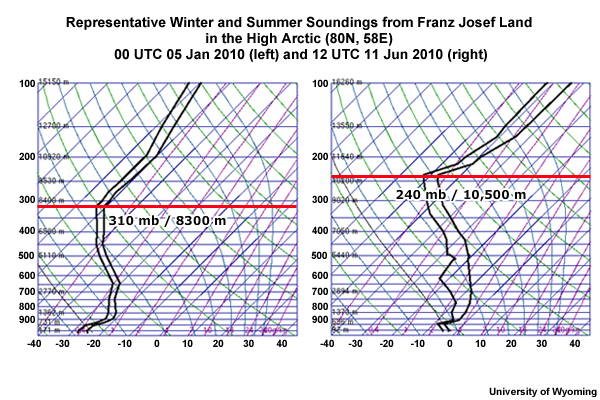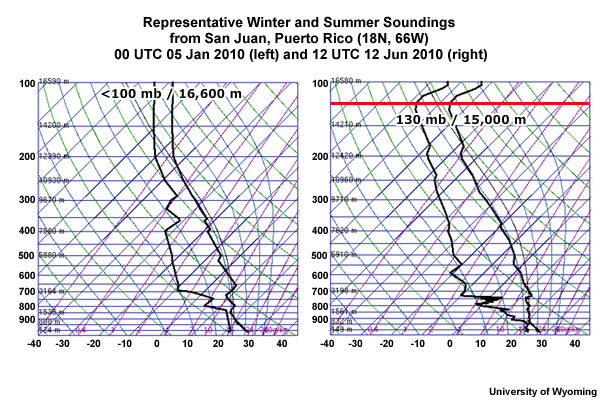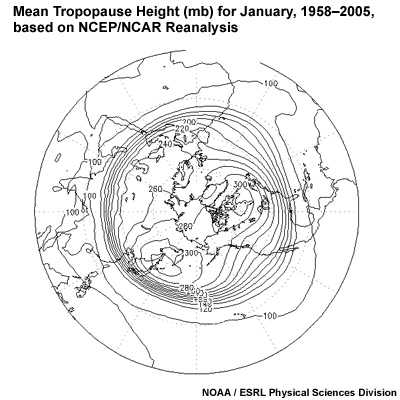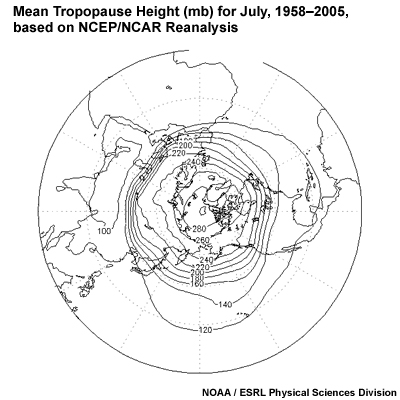Arctic ClimateTropopause

Generally speaking, in the Arctic, the tropopause (the level at which the fall of temperature with height ceases) is lower than in the tropics. The height of the tropopause varies seasonally in the Arctic from 8000 m in January to over 10,000 m in July. These soundings come from Franz Josef Land in the high Arctic (80N). The tropopause on 5 January was at about 310 mb or 8300 m. On 11 June, it was about 240 mb or 10,500 m.

Compare the Arctic soundings to these from San Juan, Puerto Rico (18N) for similar dates. In both January and July, the tropopause was near or above the 100-mb level at over 15 km.


If we look at maps of the height of the tropopause, we see a strong gradient in the mid latitudes that shifts north in the summer and south in the winter. This gradient marks the location of the polar jet.
As a result of the lower tropopause, clouds and storms are generally lower in the Arctic than at mid latitudes. In winter even intense cyclones are usually confined to altitudes below 15,000 ft (4600 m). The rare thunderstorm may be capped at a similar level.